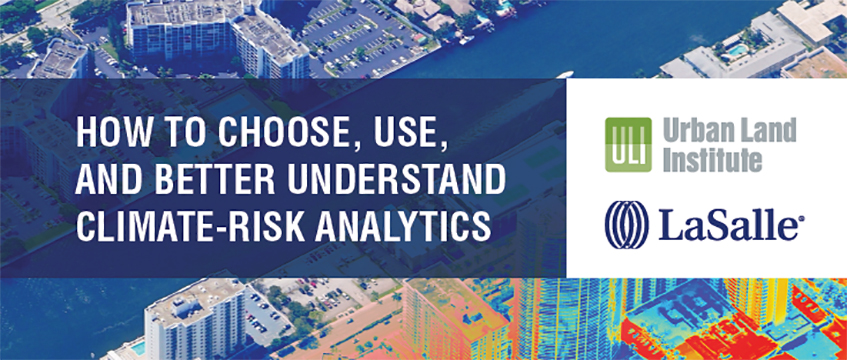A toolkit to help real estate manage climate risk has been launched by the Urban Land Institute and LaSalle.
The report – How to choose, use and better understand climate-risk analytics – outlines steps that real estate practitioners can take to incorporate the growing risk of wildfires, hurricanes, and excessive heat into their business models.
“Over the past few years, climate analytics tools have transformed how investors can assess, price and mitigate climate risk,” said Billy Grayson, executive vice president for centres and initiatives at ULI. “As with all new tools, it will take some time for real estate developers and investors to identify the best ways to apply these tools to real estate decision-making. Learning from the successes and challenges of early adopters will help the real estate community as a whole, and we hope this report can serve as a roadmap for those looking to better leverage these tools to manage climate risk in their assets and portfolios.”
Elena Alschuler, Americas head of sustainability at LaSalle, added: “Dealing with climate risk is a collective effort – we all benefit from consistency and transparency. Alignment on key terms and methodologies is critical to the industry’s effort to assess and address climate risk, which should ultimately benefit investors through improved returns.”
The climate assessment roadmap aims to help the real estate industry:
- Assess key areas of variation among climate risk providers in terms of the strength of their approach and ability to meet strategic objectives, such as business needs and regulatory compliance.
- Interpret physical climate risk results including value-at-risk, or the potential financial impact of a property experiencing climate-related damage.
- Integrate risk-assessment strategy with acquisition, development, financial reporting, and asset and portfolio management teams.
It also warns that current risk metrics are inconsistent, while applying the complexity of climate science to the real estate industry is still in its early stages.
“Investors today face numerous challenges factoring climate risk into their portfolios,” said Lindsay Brugger, vice president of resilience at ULI. “The industry lacks clear guidance around how climate risk data providers should be selected and how to integrate that information into business strategy. This report provides a series of guidelines so real estate practitioners can simultaneously mitigate the effects of climate change while remaining competitive in a rapidly evolving marketplace.”
To send feedback, e-mail piers.wehner@eg.co.uk or tweet @PiersWehner or @EGPropertyNews











